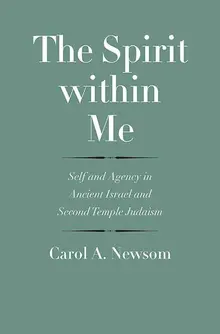

The Spirit within Me: Self and Agency in Ancient Israel and Second Temple Judaism
in Anchor Yale Bible Reference Library
Pages
296
Publisher
Yale University Press
Published
10/12/2021
ISBN-13
9780300208689
The first full-length study of the evolution of self and agency in ancient Israelite anthropology.
Conceptions of “the self” have received significant recent attention in philosophy, anthropology, and cultural history. Scholars argue that the introspective self of the modern West is a distinctive phenomenon that cannot be projected back onto the cultures of antiquity. While acknowledging such difference is vital, it can lead to an inaccurate flattening of the ancient self.
In this study, Carol A. Newsom explores the assumptions that govern ancient Israelite views of the self and its moral agency before the fall of Judah, as well as striking developments during the Second Temple period. She demonstrates how the collective trauma of the destruction of the Temple catalyzed changes in the experience of the self in Israelite literature, including first‑person-singular prayers, notions of self‑alienation, and emerging understandings of a defective heart and will. Examining novel forms of spirituality as well as sectarian texts, Newsom chronicles the evolving inward gaze in ancient Israelite literature, unveiling how introspection in Second Temple Judaism both parallels and differs from forms of introspective selfhood in Greco‑Roman cultures.
Conceptions of “the self” have received significant recent attention in philosophy, anthropology, and cultural history. Scholars argue that the introspective self of the modern West is a distinctive phenomenon that cannot be projected back onto the cultures of antiquity. While acknowledging such difference is vital, it can lead to an inaccurate flattening of the ancient self.
In this study, Carol A. Newsom explores the assumptions that govern ancient Israelite views of the self and its moral agency before the fall of Judah, as well as striking developments during the Second Temple period. She demonstrates how the collective trauma of the destruction of the Temple catalyzed changes in the experience of the self in Israelite literature, including first‑person-singular prayers, notions of self‑alienation, and emerging understandings of a defective heart and will. Examining novel forms of spirituality as well as sectarian texts, Newsom chronicles the evolving inward gaze in ancient Israelite literature, unveiling how introspection in Second Temple Judaism both parallels and differs from forms of introspective selfhood in Greco‑Roman cultures.